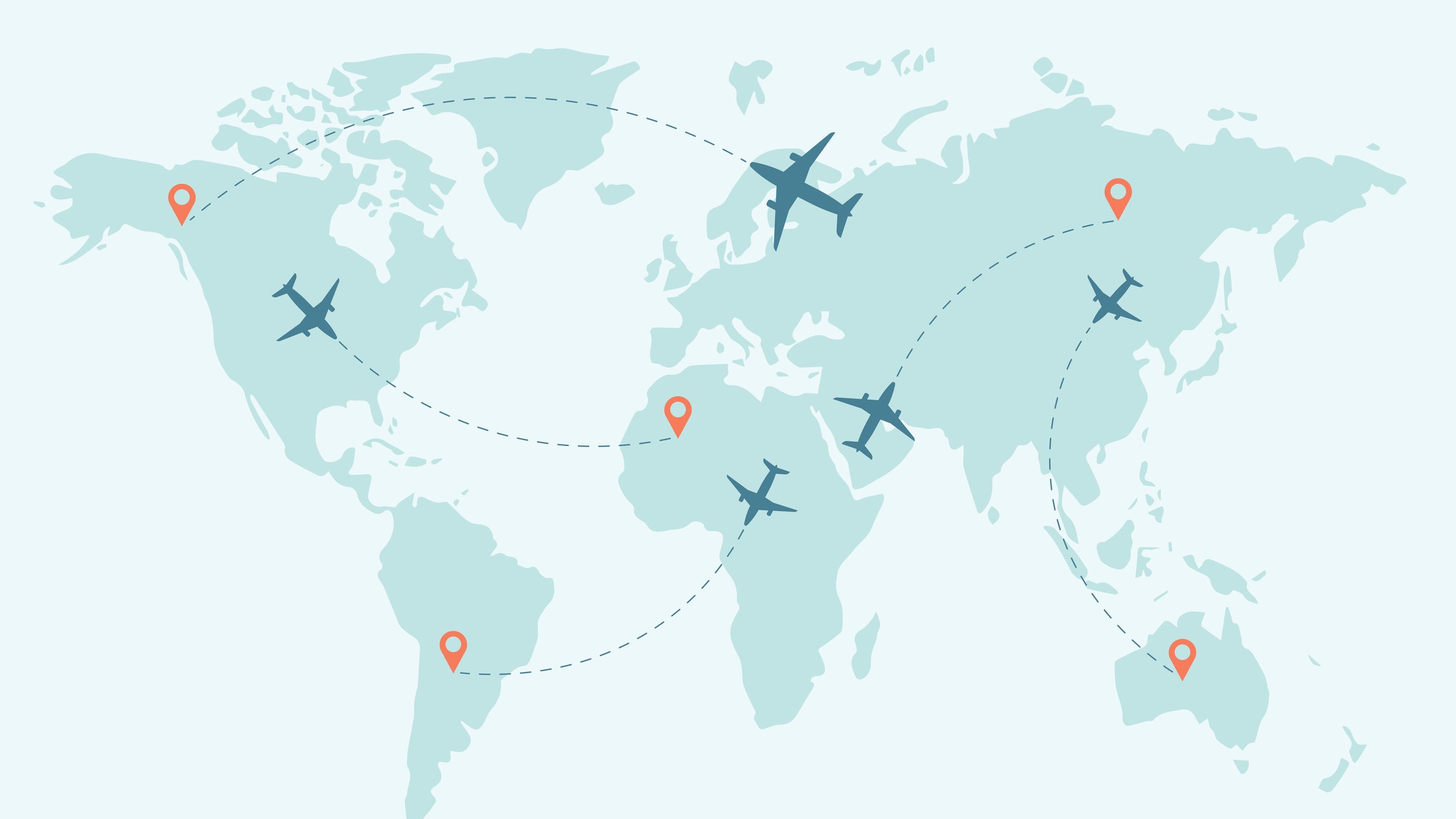Worst Airports for Flight Cancellations and Delays
Bleary-eyed after midnight, I reloaded the United Airlines app for the umpteenth time, desperately hoping my 8pm flight to London Heathrow, now scheduled for 1.30am, would finally start boarding. Instead, I received a text at 12.39 am that the flight had been cancelled.
Perhaps it shouldn’t have come as a surprise. It was 1 June – just days into the summer travel season – and I was at Newark Liberty International Airport, one of the world’s top airports for flight cancellations at a time when on-time departures have become increasingly rare in the realities of international travel.
While the time of day can play a major role in flight disruptions, the airports themselves may be a more crucial factor, as certain ones have recently developed a track record for frequent cancellations. Aviation intelligence company FlightAware compiled new data revealing which international airports have had the most cancelled flights from May 27 until July 31, 2022, to help travellers better plan for smooth journeys.
Here are the worst airports in the world in terms of flight cancellations – plus some alternative facilities to fly into instead.
Two of the Worst Airports are in New York
New York City’s airports ranked among the top 10 worst in the globe for delays and cancellations this summer. LaGuardia airport saw 7.4 percent of its overall flights cancelled and 27 percent delayed, making it the seventh worst airport in the world for cancellations and the top international airport for cancellations not located in China, a country known for its high cancellation rates. Not far behind LaGuardia is New Jersey’s Newark Liberty, ranking ninth with 7.2 percent of summer flights ending in cancellations and 32 percent of flights delayed.
Additionally, New York’s largest airport, John F. Kennedy International, fared better with just 3.3 percent cancellations, ranking 30th on FlightAware’s list. However, 32.5 percent of flights do leave the hub delayed.
Choosing alternative options in the region can quell these frustrations. About 70 miles north – or approximately a 90-minute drive – is a calmer international airport option tucked away in the Hudson Valley: New York Stewart. New airline Play services Reykjavik from there, nonstop, with connections through Europe.
Other US Airports with High Cancellations and Delays
It’s not only New York’s airports that have left US travellers high and dry. Other domestic airports with significant numbers of delays and cancellations include Washington DC’s Reagan National airport, which took the 21st spot on FlightAware’s list with 5.1 percent of its flights cancelled this summer and 27.9 percent delayed. Other notable domestic airports that made the list include Boston Logan, in 27th place, with 3.4 percent of flights cancelled and 24.9 percent of flights delayed; Charlotte Douglas airport in 29th place with 3.3 percent of flights cancelled and 29.8 percent of flights delayed; and St. Louis’s Lambert airport with 3.1 percent of flights cancelled and 24.4 percent of flights delayed.
International Airports
Outside of the US, international airports are facing their share of operational problems. In North America, Canada’s Toronto Pearson airport comes in at 15th with a 6.5 percent cancellation rate and an astounding 55.8 percent of flights delayed this summer. Toronto airport has been plagued by staffing and operational issues, continuing to rank high in cancellations and delays.
In the South Pacific, Australia also has two cities in the mix: Melbourne Tullamarine (MEL) in 17th place with a 6 percent cancellation rate and Sydney in 18th with 5.8 percent of flights cancelled. In Asia, Jakarta’s airport has the worst statistics outside of China, with 6.6 percent of flights cancelled and 33.1 percent of flights delayed, giving it the 11th overall spot on the list.
Europe’s worst airports include Norway’s Oslo Gardermoen, ranking 14th with 6.5 percent cancellations, and Germany’s Frankfurt in 24th with a 4 percent cancellation rate. Frankfurt, often regarded as one of the best-run European airports, has struggled with staffing problems leading to mass cancellations.
Smaller Airports May Be a Better Choice
Short of totally avoiding cities with high cancellations, travellers can look at smaller, regional airports as another solution. While major airports may seem like the easier option, more passengers and flights increase the chance for disruptions, whereas smaller airports often cater better to their flight needs.
For instance, London – whose Heathrow came in at 42nd with a 2.2 percent cancellation rate and 40.7 percent of flights delayed, and Gatwick in 49th with 1.9 percent cancellations and 41.7 percent delay rate – is not the only option serving international passengers in the English capital city. London has alternative airports such as London Stansted, London City Airport, and London Luton, each of which have far fewer cancellations and delays.
International Airports with the Fewest Cancellations
Even though it seems like chaos is reigning at most airports this summer, fortunately, there are still some facilities around the globe that are operating smoothly. Among those with less than 0.3 percent rate of cancellation this summer are: Vietnam’s Tan Son Nhat airport serving Ho Chi Minh City, Bangkok’s Suvarnabhumi, Philippines’ Manila Ninoy Aquino, Singapore Changi, Istanbul Sabiha Gökçen, São Paulo-Guarulhos, Qatar’s Hamad in Doha, and South Korea’s Jeju (CJU).




